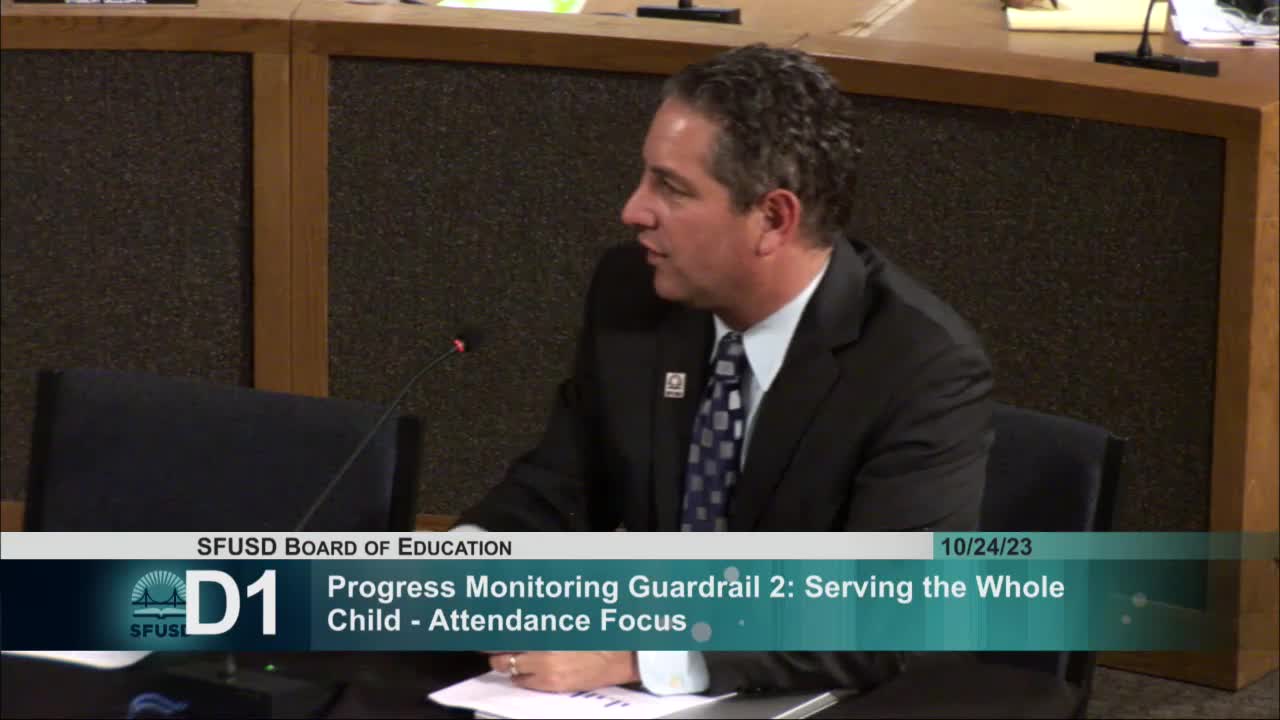Grace City Schools report focuses on reducing chronic absenteeism to improve student outcomes
October 24, 2023 | San Francisco City, San Francisco County, California
This article was created by AI summarizing key points discussed. AI makes mistakes, so for full details and context, please refer to the video of the full meeting. Please report any errors so we can fix them. Report an error »

San Francisco's education leaders are taking decisive steps to tackle chronic absenteeism in schools, a pressing issue that has emerged in the wake of the pandemic. During a recent government meeting, officials discussed the implementation of interim guardrails aimed at ensuring that all students are present and engaged in their education.
The meeting highlighted the importance of attendance as a critical measure of student engagement and learning. Superintendent Dr. Wayne emphasized that while attendance does not directly reflect a student's knowledge or abilities, it is a vital indicator of the support systems in place for students. The district has set a goal to reduce chronic absenteeism from 29% to 24% by the 2023-2024 school year, a target that reflects community concerns raised in previous discussions.
Data presented during the meeting revealed that while there has been some progress in reducing absenteeism, significant disparities remain among different student groups. The district plans to adopt a targeted universalism approach, focusing on improving attendance rates among Pacific Islander, African American, and foster youth students, who have been identified as needing additional support.
In addition to attendance, the meeting also touched on the concept of students' sense of belonging in schools. A decline in this area has been noted, which correlates with absenteeism rates. Officials acknowledged that fostering a sense of belonging is crucial for encouraging students to attend school regularly.
The district's strategy includes conducting a root cause analysis to better understand the factors contributing to absenteeism. This analysis involved gathering insights from students, families, and staff to identify barriers to attendance. The findings will inform the development of targeted interventions aimed at improving student engagement and attendance.
As the district moves forward with these initiatives, the focus remains on creating an inclusive and supportive environment that encourages all students to attend school and thrive academically. The next steps will involve monitoring progress and adjusting strategies based on ongoing data analysis and community feedback.
The meeting highlighted the importance of attendance as a critical measure of student engagement and learning. Superintendent Dr. Wayne emphasized that while attendance does not directly reflect a student's knowledge or abilities, it is a vital indicator of the support systems in place for students. The district has set a goal to reduce chronic absenteeism from 29% to 24% by the 2023-2024 school year, a target that reflects community concerns raised in previous discussions.
Data presented during the meeting revealed that while there has been some progress in reducing absenteeism, significant disparities remain among different student groups. The district plans to adopt a targeted universalism approach, focusing on improving attendance rates among Pacific Islander, African American, and foster youth students, who have been identified as needing additional support.
In addition to attendance, the meeting also touched on the concept of students' sense of belonging in schools. A decline in this area has been noted, which correlates with absenteeism rates. Officials acknowledged that fostering a sense of belonging is crucial for encouraging students to attend school regularly.
The district's strategy includes conducting a root cause analysis to better understand the factors contributing to absenteeism. This analysis involved gathering insights from students, families, and staff to identify barriers to attendance. The findings will inform the development of targeted interventions aimed at improving student engagement and attendance.
As the district moves forward with these initiatives, the focus remains on creating an inclusive and supportive environment that encourages all students to attend school and thrive academically. The next steps will involve monitoring progress and adjusting strategies based on ongoing data analysis and community feedback.
View the Full Meeting & All Its Details
This article offers just a summary. Unlock complete video, transcripts, and insights as a Founder Member.
✓
Watch full, unedited meeting videos
✓
Search every word spoken in unlimited transcripts
✓
AI summaries & real-time alerts (all government levels)
✓
Permanent access to expanding government content
30-day money-back guarantee

